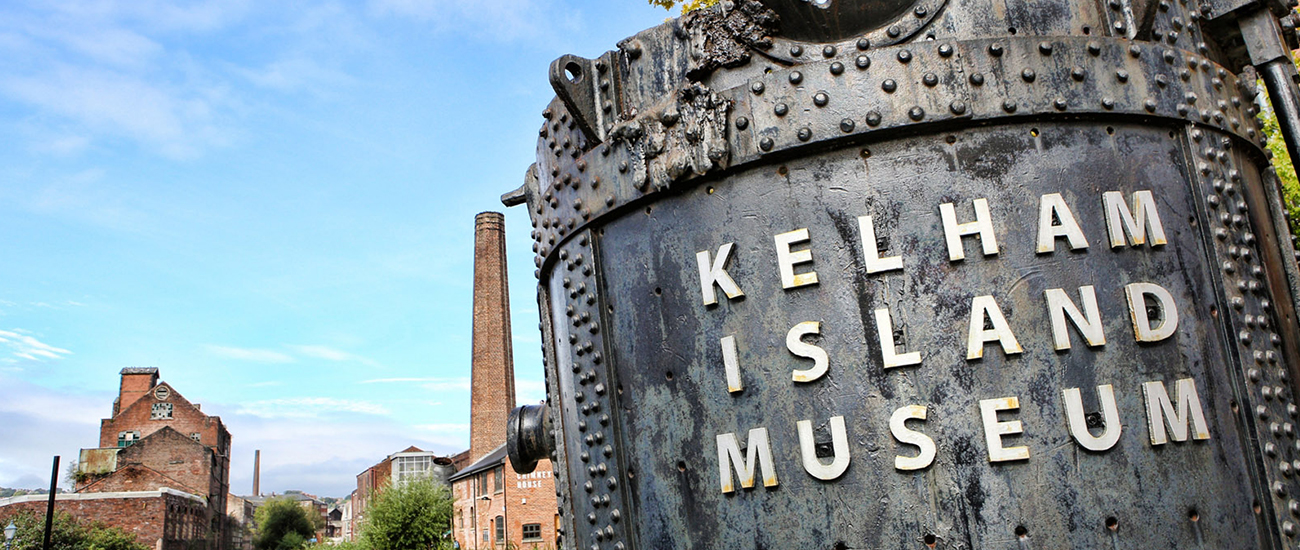George Orwell once famously called Sheffield “the ugliest town in the Old World” – but for a city that is not especially lauded for its outer appearance, its remarkable history accounts for a unique, gritty charm that envelops its community today.
Considered the “Steel City” of the United Kingdom, Sheffield was internationally known as a major hub in steel production during the 19th century. It singlehandedly propelled the Industrial Revolution, establishing itself as the manufacturing center of the UK.
It ultimately sealed its reputation as a powerhouse synonymous with steel after a string of local innovations, including crucible and stainless steel.
However, Sheffield’s economy went into decline in the 20th century due to the recession and rising global competition. It still managed to retain its powerful history, and in current times, is seeing a reincarnation of its former self.
It’s no longer the bustling picture of steel mills, forges and cutlery factories it once was, but Sheffield has created a new urban landscape for itself, filled with modern sculptures, an irreplicable cultural scene and a slew of remarkable universities.
Still, “Sheffield Steel” remains an important part of Sheffield’s identity — and through noteworthy attractions occupying its regions, it continues its solid legacy in steel.
Rounding out Sheffield’s Inventive History – Kelham Island Industrial Museum

Located in Sheffield’s oldest industrial districts, the Kelham Island Industrial Museum stands on a centrally located man-made island that is over 900-years-old, named after the town armourer at the time.
Since opening in 1982, the museum has featured Sheffield’s story of industrialization in various exhibitions – ranging from the city’s trading history to the legendary workmanship behind “Made in Sheffield” steel products.
Some of the can’t-miss sights of the museum include reconstructed examples of little mesters’ workshops, highlighting the craftspeople behind the city’s famous cutlery and tools, and England’s largest surviving Bessemer converter.
The Kelham Island Museum is one of the three heritage sites that make up the Sheffield Industrial Museums Trust (SIMT), and one of the city’s most popular cultural attractions.
A Day in the Life of a Victorian Steelworker – Abbeydale Industrial Hamlet
Residing in the south of the city, the Abbeydale Industrial Hamlet is another heritage site that plays a part in the SIMT.
Abbeydale Works was once the largest water-powered industrial site on the River Sheaf, and has since transformed into a historical gem offers a glimpse into what life was really like for steelworkers during the 18th to 19th centuries.
The former steelworks site was used for iron forging for 500 years, particularly for making scythes, and was one of the first factories to produce high-quality stainless steel.
It was eventually abandoned after advancements in industrial technology and now serves as a relic detailing the inner-workings of an original steel factory.
Cherished Metals – Millennium Gallery

Alongside numerous exhibitions featuring the best of the arts, the Millennium Gallery in Sheffield proper features a metalwork collection cataloging perhaps the most extensive gathering of Sheffield-made cutlery and other related objects.
Cutlery is one of Sheffield’s most storied commodities, and the museum preserves the artifacts’ world-renowned designs and craftsmanship for the public to see.
The museum opened in 2001 as a core part of Sheffield’s “Heart of the City” project, a major redevelopment effort initiated by the city to regenerate the city’s center.
In conjunction with the metalwork collection, the Millennium Gallery is also home to other collections featuring Sheffield’s history, including watercolors, drawings, illustrated books, manuscripts and coins. Temporary exhibitions showcasing the influence of Sheffield’s steel tradition on contemporary works can be seen from time to time.
A Steel Commune – Portland Works

Finally, Sheffield’s inclination towards breeding artisans can be pinpointed to Portland Works – an old cutlery factory that was saved and redeveloped into an artists’ collective in 2013 by community shareholders.
The building is now inhabited by “makers” of all disciplines – from steel forging to gin distilling – and is filled with affordable, restored and retrofitted workshops to nurture the small-scale manufacturing that lives on in the Sheffield community.
Portland Works is also one of the oldest examples of a working metal trades factory. Amazingly, the forge that was built in 1879, where stainless steel was originally produced, is still in daily use. It is an emblem of how old and new practices have come to characterize Sheffield’s skillful community today.
Reincarnating Steel
Like many of the northern English cities that were once dependent on traditional industry, Sheffield is transforming itself to embrace a heritage wrought out in steel while surging ahead with modern developments.
It is a city that once tirelessly worked its way to be a leader in steel, and its industrious and creative capabilities have lasted throughout the years – ultimately contributing to the rich cultural scene the city holds today.

Steel City Highlight: Pohang, Korea
Steel City Highlight: Košice, Slovakia
Steel City Highlight: Birmingham, USA
Steel City Highlight: Kaohsiung, Taiwan
Steel City Highlight: Pittsburgh, USA
